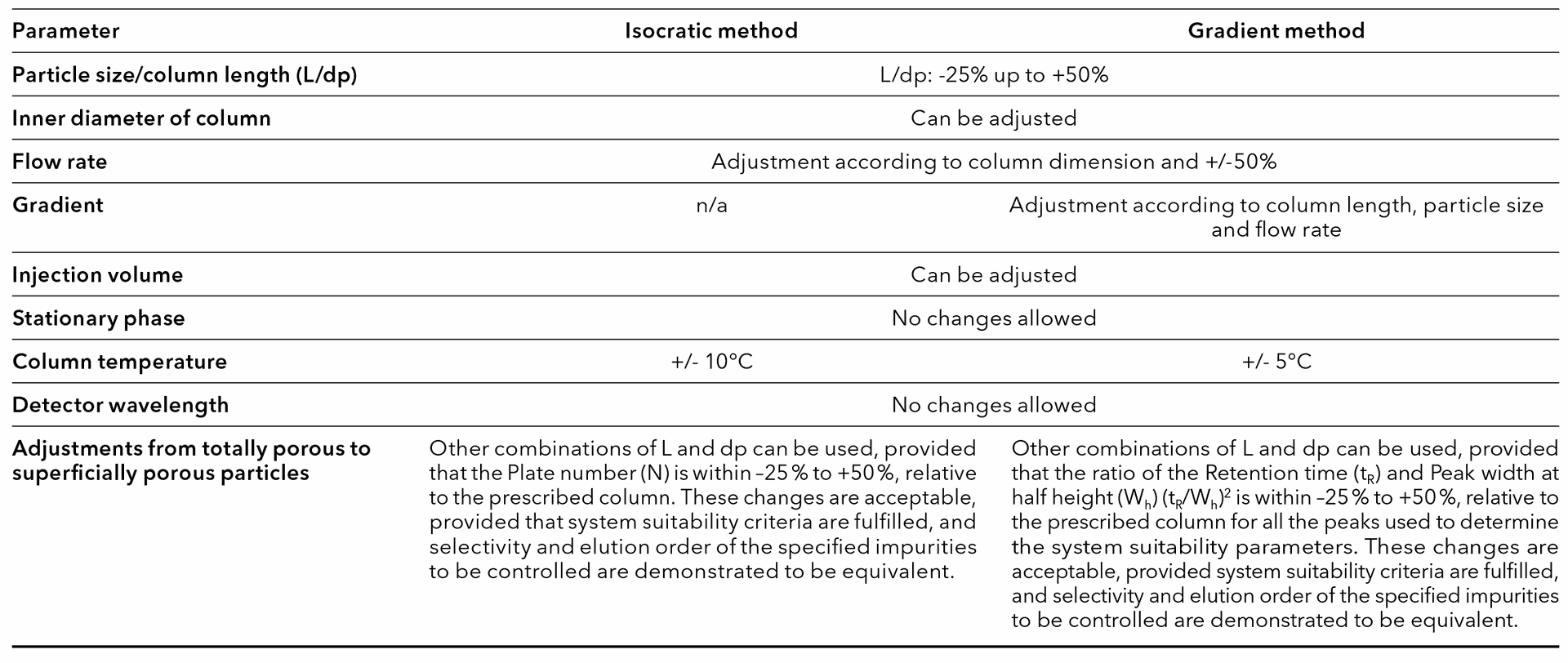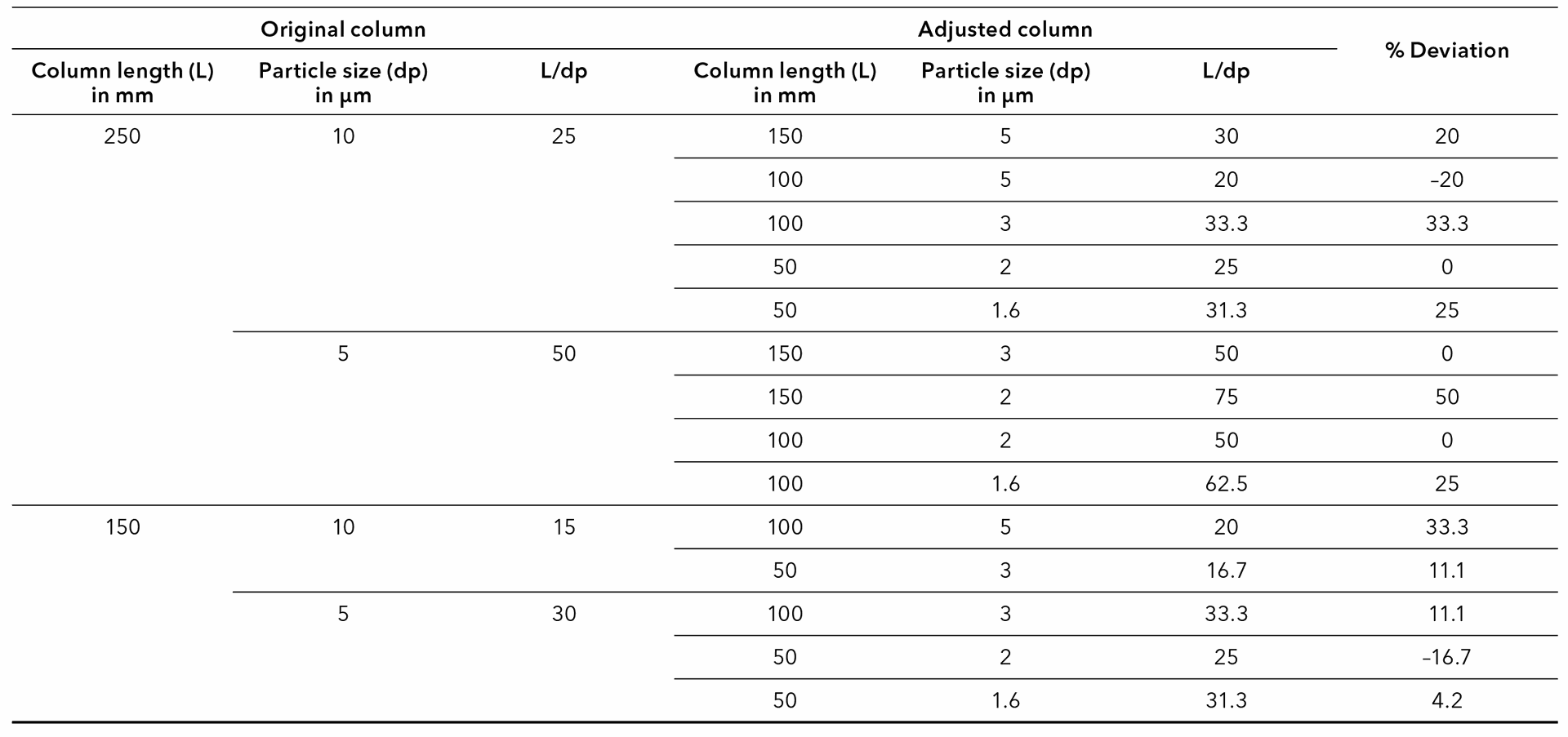Science with Passion
Application No.: VTN0029 Version 1 07/2023
Implement the new USP 621 changes for higher productivity – greener and faster (U)HPLC methods with modern columns
U. Krop, G. Greco; krop@knauer.net
KNAUER Wissenschaftliche Geräte GmbH, Hegauer Weg 38, 14163 Berlin
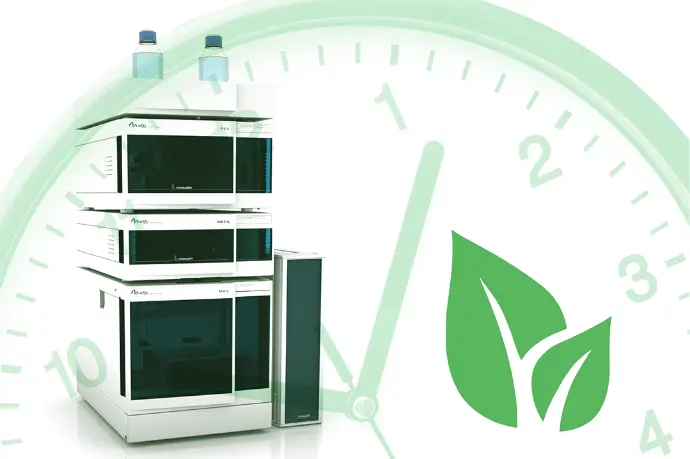
Collage: KNAUER
Summary
The US Pharmacopeia (USP) General Chapter <621> Chromatography defines the range in which the various parameters of a chromatographic method may be adjusted without fundamentally modifying the pharmacopeial analytical test. Here, we introduce a simple and effective tool, the KNAUER HPLC Method Converter, to assist you to modernize the analytical method according to the allowed variations.
Introduction
The US Pharmacopeia (USP), as well as the European Pharmacopeia (EP) and Japanese Pharmacopoeia (JP), provides the guidelines for analytical methods to control the quality of medicines and ingredients. These USP <621> standard methods were often developed on long columns with large particle sizes. They are easy and robust methods, but at the price of very low productivity and high environmental impact. With the advancement in the chromatography and column technology, many users were looking at the potentiality to modernize USP methods, but up to now it was very limited due to the USP constrains. In today's world, short HPLC runtimes and sustainable methods with low solvent use are becoming increasingly important. HPLC users need to boost productivity, save time and money, and minimize the environmental impact. Nowadays, you can fasten your analytical separation with 2 µm particle size, like the KNAUER Eurospher II columns, and enhance your system performance by reducing extra column volume with low dispersion systems, like the KNAUER AZURA® 862 ULDC chromatography systems and the KNAUER AZURA® UHPLC system at 1240 bar with our new P 8.1L pump.
New Pharmacopeia changes for HPLC methods
Since December 1, 2022, the US Pharmacopeia and since January 1, 2023, the European and Japanese Pharmacopoeia allow alterations to modernize HPLC methods. From now on changes in column dimension as well as particle size are accepted for both isocratic and gradient methods. Tab. 1 shows an overview of the possible changes for parameters and the range in which adjustments can be made.
Tab. 1 Overview of changes
Change your method with the KNAUER HPLC Method Converter
Method adjustments can be easily calculated with the KNAUER HPLC Method converter (Fig. 1). Just fill in the parameters of your original method in the Columns & Methods window. In addition, you choose a new column dimension and particle size. The converter calculates the % deviation of the ratio between the column length and particle size and helps to estimate if this is within the –25 % and +50 % of the allowed range. If the %deviation is out of range, the font colour changes to red. The flow rate and injection time are calculated with the formulas corresponding to the USP 621.
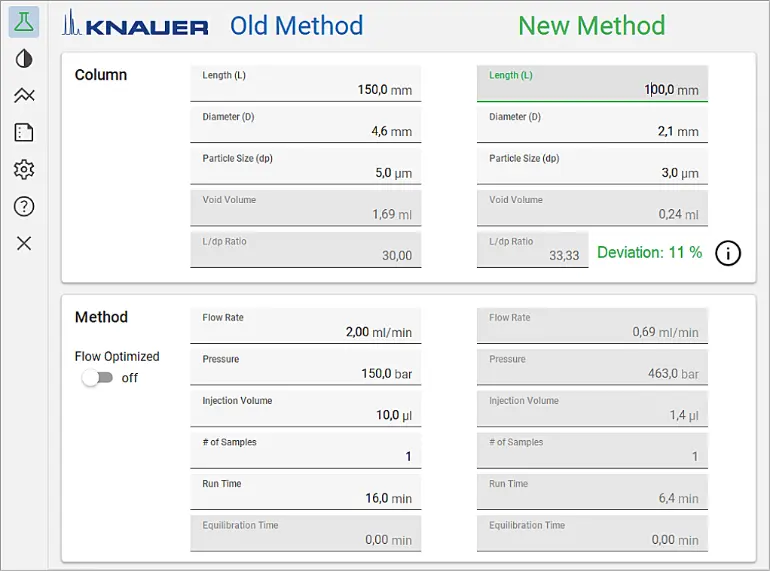
Fig. 1 KNAUER HPLC Method Converter | Columns & Methods
The gradient steps and time are entered under the Gradients Window for the old method and the new gradient times are calculated automatically (Fig. 2). For an easy overview both gradients are shown in the chromatogram below.
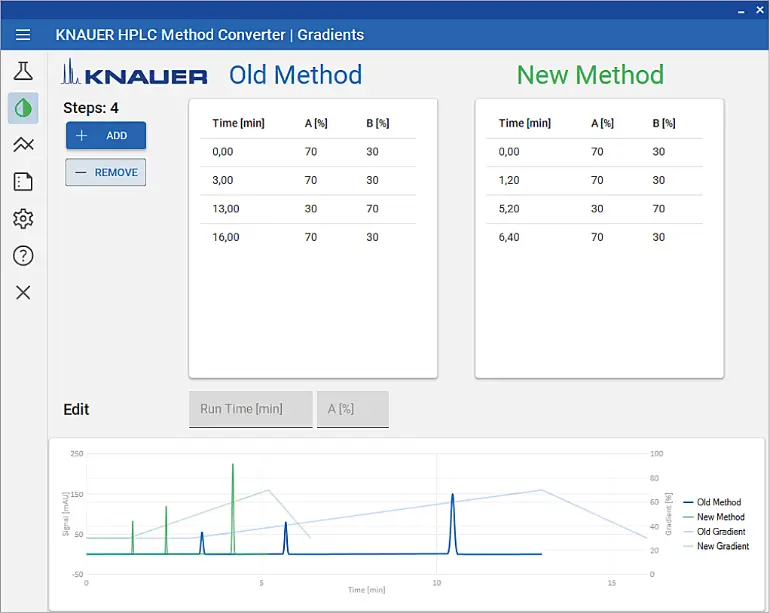
Fig. 2 KNAUER HPLC Method Converter | Gradients
The KNAUER HPLC Method Converter has an additional tool that allows you to estimate changes for the retention time, peak height and width of the peaks in your new method. Enter these parameters of your original analysis in the Edit tab and the expected peaks in your new method will be calculated. The chromatogram window of the calculator displays your chromatographic data and demonstrates possible improvements (Fig. 3) Please be aware that the data can vary with respect to peak symmetry and resolution.
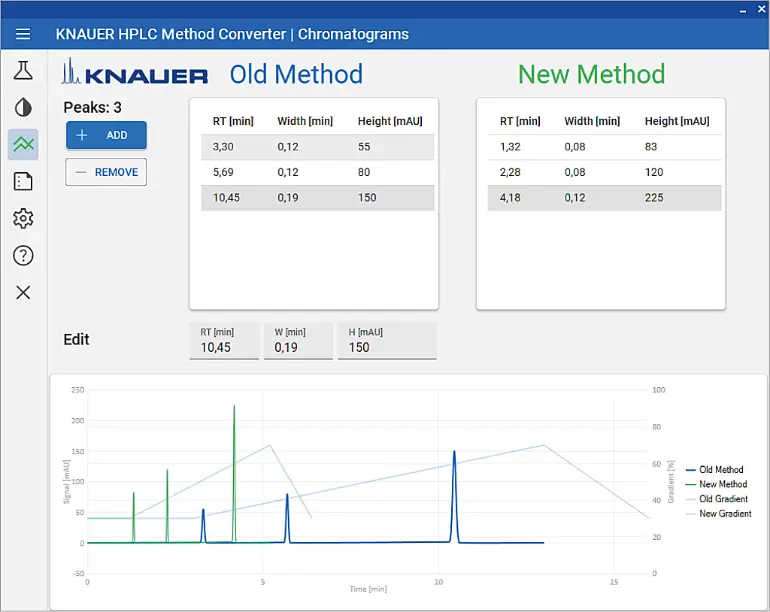
Fig. 3 KNAUER HPLC Method Converter | Chromatograms
Finally, the KNAUER HPLC Method converter automatically calculates the total eluent usage, time per run and determines the % savings in the Results Window. In our case the eluent usage per run including the equilibration time was reduced from 48.9 ml down to 6.8 ml and the total run time was reduced from 24.5 min to 9.9 min. In other words, the eluent usage was reduced by 86 % and the time per analysis by 60 %, highlighting the ecologic and economic benefits of modernizing your methods (Fig. 4).
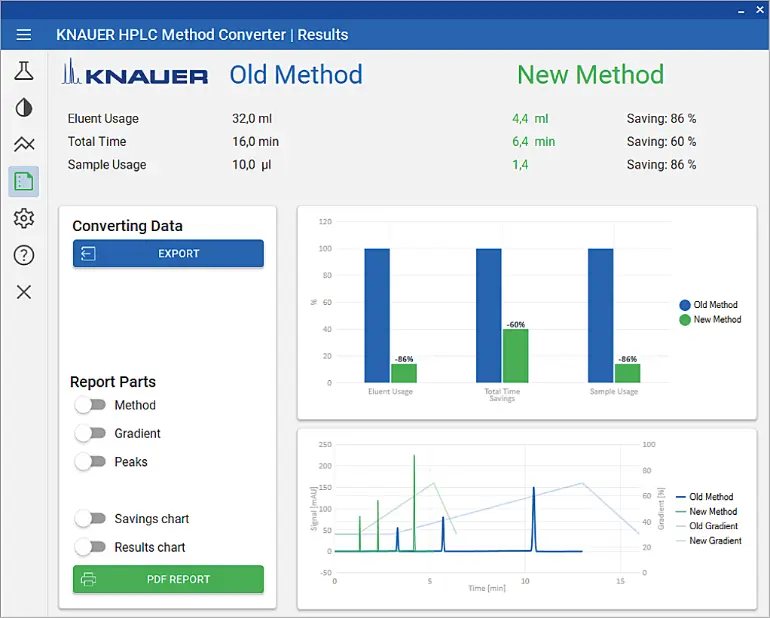
Fig. 4 KNAUER HPLC Method Converter | Results
Column selection
A change in column dimension is allowed if the ratio between the column length and particle size is in the range within –25 % and +50 % from the original method. The KNAUER HPLC converter allows an easy calculation. Since the effects for the change in column dimensions and particle size are not apparent at first glance, we have created a table with some exemplary calculations (Tab. 2). The length-to-particle size ratio for common original column lengths and particle size is compared to possible adjustments to more modern parameters that can be considered to modernize your method.
Tab. 2 Exemplary calculations for changes in L/dp
KNAUER offers a wide range of analytical HPLC and UHPLC columns for various separation tasks. Eurospher II silica gel features very narrow particle and pore size distributions, as well as outstanding mechanical stability. A few different endcappings and C18 modifications are available. Besides classical column dimensions, modern sizes between 50- and 150-mm length and particle size of
2 µm allow you to fasten your analytical separation.
System optimization
While scaling your method please keep your system setup in mind. Smaller particles and smaller internal column diameter might result in smaller peak volumes. Extra-column band broadening might occur due to factors such as instrument connections, capillaries, detector cell volume and sampling rate. Adjustments to the system to minimize this effect might be necessary.
KNAUER AZURA ULDC (ultra-low dispersion chromatography) system meets the requirements for minimizing extra column volume and peak dispersion and is the ideal system to implement the new modernized USP <621> methods. Additionally smaller particles will increase the back pressure. Make sure to work within the pressure limits of your HPLC system.
KNAUER AZURA (U)HPLC systems are a complete portfolio of analytical LC systems up to 1 240 bars (18,000 psi).
Conclusion
The permitted changes for USP and EP methods will have a major impact on current efforts to develop sustainable HPLC methods. Shorter columns with shorter run times and thus less eluent consumption make your analysis more environmentally friendly and more productive. We have shown an exemplary calculation to adjust your column dimension and particle size, resulting in 86 % less solvent consumption and 60 %-time savings. The KNAUER HPLC Method Converter is an excellent tool to easily modernize your method.
References
Application details
Method | (U)HPLC |
Mode | Other |
Version | Application No.: VTN0029 | Version 1 07/2023 | ©KNAUER Wissenschaftliche Geräte GmbH |




